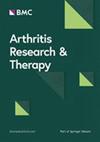Global burden and trends of musculoskeletal disorders in postmenopausal elderly women: a 1990–2021 analysis with projections to 2045
IF 4.6
2区 医学
Q1 Medicine
引用次数: 0
Abstract
The global burden and trend of musculoskeletal disorders (MSDs) in postmenopausal women (PMW) remain unclear. Using the Global Burden of Disease (GBD) 2021 data, this study assessed the prevalence and disability-adjusted life years (DALYs) for rheumatoid arthritis (RA), osteoarthritis (OA), low back pain (LBP), neck pain (NP), gout, and other musculoskeletal conditions (OMSKDs) from 1990 to 2021. Bayesian Age-Period-Cohort (BAPC) models projected trends to 2045. Health inequalities were analyzed using the Slope Index of Inequality (SII) and the Concentration Index, with decomposition methods identifying the drivers of burden changes. From 1990 to 2021, the age-standardized prevalence and DALYs rates have significantly increased among PMW, with OA and LBP being the primary contributors to this burden. These increases were primarily driven by population growth. Specifically, RA, OA, and gout accounted for more than 50% of the total burden in women across all age groups, with RA burden being 1.2 times higher than that in premenopausal women, OA 3.1 times higher, and gout 2.9 times higher. Notably, in PMW, the burden of gout was 74%. The burden of gout is strongly correlated with the Socio-Demographic Index (SDI), particularly in high-income regions, such as North America, where the United States exhibits the highest DALYs rates. Furthermore, projections indicate that by 2045, the global burden of MSDs could double, with OA potentially affecting nearly 50% of the PMW. From 1990 to 2021, the global burden of MSDs among PMW has risen significantly, with notable regional disparities underscoring the critical need for tailored preventive strategies to alleviate the worldwide impact of these conditions.绝经后老年妇女肌肉骨骼疾病的全球负担和趋势:1990-2021年的分析和2045年的预测
绝经后妇女(PMW)肌肉骨骼疾病(MSDs)的全球负担和趋势尚不清楚。使用全球疾病负担(GBD) 2021数据,本研究评估了1990年至2021年间类风湿性关节炎(RA)、骨关节炎(OA)、腰痛(LBP)、颈痛(NP)、痛风和其他肌肉骨骼疾病(OMSKDs)的患病率和残疾调整生命年(DALYs)。贝叶斯年龄-时期-队列(BAPC)模型预测到2045年的趋势。采用不平等斜率指数(SII)和浓度指数分析健康不平等,并采用分解方法确定负担变化的驱动因素。从1990年到2021年,PMW的年龄标准化患病率和DALYs率显著增加,OA和LBP是造成这一负担的主要原因。这些增长主要是由人口增长推动的。具体而言,RA、OA和痛风占所有年龄组妇女总负担的50%以上,RA负担比绝经前妇女高1.2倍,OA负担高3.1倍,痛风负担高2.9倍。值得注意的是,在PMW中,痛风负担为74%。痛风负担与社会人口指数(SDI)密切相关,特别是在高收入地区,如北美,其中美国显示出最高的DALYs率。此外,预测表明,到2045年,全球MSDs负担可能翻一番,OA可能影响近50%的PMW。从1990年到2021年,PMW中msd的全球负担显著增加,区域差异显著,强调迫切需要制定有针对性的预防战略,以减轻这些疾病的全球影响。
本文章由计算机程序翻译,如有差异,请以英文原文为准。
求助全文
约1分钟内获得全文
求助全文
来源期刊

Arthritis Research & Therapy
RHEUMATOLOGY-
CiteScore
8.60
自引率
2.00%
发文量
261
审稿时长
14 weeks
期刊介绍:
Established in 1999, Arthritis Research and Therapy is an international, open access, peer-reviewed journal, publishing original articles in the area of musculoskeletal research and therapy as well as, reviews, commentaries and reports. A major focus of the journal is on the immunologic processes leading to inflammation, damage and repair as they relate to autoimmune rheumatic and musculoskeletal conditions, and which inform the translation of this knowledge into advances in clinical care. Original basic, translational and clinical research is considered for publication along with results of early and late phase therapeutic trials, especially as they pertain to the underpinning science that informs clinical observations in interventional studies.
 求助内容:
求助内容: 应助结果提醒方式:
应助结果提醒方式:


